STORMY TIMES
‘Under Hauptmann Berthold’s excellent leadership, and energised by his personal daring and skill, Jasta 18 has won eighteen... aerial victories over enemy aeroplanes.’1
GENERALLEUTNANT KARL DIEFFENBACH
Blustery, rainy autumn weather hampered air operations over Flanders in late September 1917. So, when low-hanging clouds dispersed on Tuesday, 2 October 1917, Allied and German aircrews were out in force. The Nachrichtenblatt weekly summary of air operations for that day noted ‘brisk activity on both sides. In the 4th Army sector, [British] bombers and reconnaissance formations thrust far into our rear areas; Jagdstaffel 18 led by Oberleutnant Rudolf Berthold shot down three of five aeroplanes in a bomber formation.’2 The other side of the German claim was reported in the day’s Royal Flying Corps War Diary entry:
‘When returning from a bomb raid on Abeele aerodrome, five De Havilland 4s of 57 Squadron were attacked by about fifteen Albatros Scouts. In the combat that followed, 2/Lt. F.A. Martin and Lt. J. O’Neill were attacked by three of the scouts and the observer shot one down in flames. Capt. D. Hall and 2/Lt. E. Hartigan engaged a number of the Scouts. One attacked from the side and then turned and flew parallel with the D.H.4, the observer fired about ninety rounds and the struts were seen to be shot away on one side and the main [wings] came together. The machine broke up and fell out of control.
‘Another [German] machine passed in front of the D.H.4 and the pilot [fired] fifty rounds into it [whereupon] it immediately dived, broke into flames and crashed. The pilot then fired into another Scout, which went completely over and fell out of control.
‘One Albatros Scout continued to follow the D.H.4, firing at long range, so when getting nearer the lines the D.H.4 throttled down and allowed the Albatros Scout to approach. When [it was] within 200 yards, the D.H.4 [pilot, Capt. Hall] turned his machine and the observer fired a burst into the E.A. [enemy aircraft], which turned over and over and fell out of control.’3
One of the German pilots shot down in that fight, Jasta 18’s Leutnant Walther Kleffel, was ‘wounded in the calf’,4 but was also credited with shooting down an Airco D.H.4 two-seat bomber5 for his first victory. Oblt Berthold was credited with shooting down another bomber from 57 Squadron, RFC. It crashed near Roulers and was confirmed as his twenty-eighth aerial victory.6 His opponents were Second-Lieutenant Colin Geen Orr MacAndrew, age twenty, and his twenty-four-year-old observer, Leicester Philip Sidney,7 in Airco D.H.4 A.7581; both men were killed in the fight.8 Berthold’s staffel-mate Ltn Richard Runge forced a third D.H.4 to land near Roulers9 and thereby scored his eighth victory.
The Jasta 18 War Diary month-end entry made a reference to Berthold that could be taken two ways: ‘His aeroplane was known by friend and foe only as “der feuerspeiende Berg”’10 – literally the ‘fire-spewing mountain’ – with machine-gun fire pouring forth. On another level, the phrase could also have meant ‘volcano’, reflecting Berthold’s fiery and ever more erratic temperament. The pilot wounded in the most recent fight, Ltn Walther Kleffel, recalled:
‘Berthold was a strange person, one time charming, another time not so. I did not get on well with him. That was probably because, upon returning to Jasta 18 after being wounded, I often crash landed, as I always had to fly in the highest position – mostly over 6,000 metres – without any of the aids [such as oxygen] that were available later for [flying at] this altitude. Thus, I became extremely nervous due to overexertion, which was explainable by the high altitude.’11
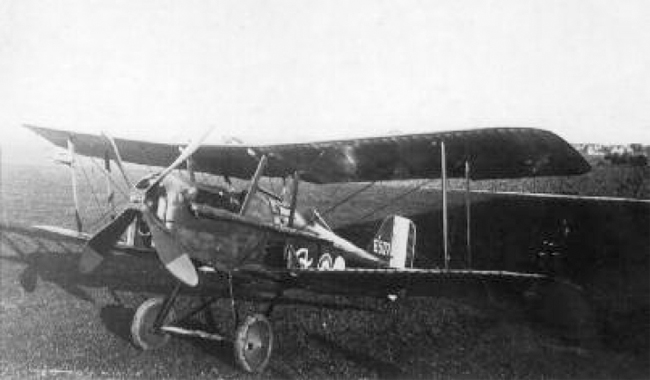
The pilot of S.E.5a B.507 of 60 Squadron, RFC inadvertently landed at Harlebeke Airfield, then home to Oblt Rudolf Berthold’s Jagdstaffel 18. (Greg VanWyngarden)
The return of stormy weather on 3 October led to greatly diminished flying activity over the Flanders sector for a week. Heavy mist caused nineteen-year-old Second-Lieutenant John Joseph Fitzgerald of 60 Squadron, RFC, who started out on the morning of Friday, 5 October, to inadvertently land his S.E.5a fighter (B.507) on the German airfield at Harlebeke. Jasta 18 was based at that facility and one of its pilots, Ltn.d.Res Paul Strähle, noted the lucky acquisition of a new British fighter aircraft in his diary: ‘Early this morning a disoriented Englishman in an S.E.5 with [a] 200-hp Hispano-Suiza engine landed on our airfield. Great excitement!’12 The aircraft was turned over to the Inspekteur der Flieger [inspectorate of aviation] for examination and testing and the Irish-born pilot became a prisoner of war.13
Berthold Shot Down Again
Wednesday, 10 October seemed to offer a break in the steady rain. German weather staff reported: ‘Low-hanging clouds and rain … detrimental to flying activity; in the afternoon, it cleared up temporarily, allowing reasonable visibility in the 4th and 5th Armies’ sectors.’14 A British communiqué noted: ‘Little flying was possible, except in the early morning and the evening, owing to rain and wind.’15
Eager to get back in the air, despite unsettled skies, Berthold led eight other Jasta 18 aeroplanes16 to the area over Roulers, north and east of Ypres. The Albatroses departed Harlebeke at about 4:45 p.m. (German time). Two flights of S.E.5s from 56 Squadron, RFC, one of the highest-scoring British fighter squadrons of the war, also took advantage of the weather that afternoon and headed for the same area.17 The leader of ‘A’ Flight, Capt Gerald C. Maxwell, MC, then a twenty-victory ace, later wrote in his combat report:
‘Crossed lines at 14,000 feet and patrolled area. At about 5 p.m. [I] saw and attacked about twelve E.A. Scouts, east of Ypres. Dived on several and fired a drum of Lewis [machine-gun ammunition] and about 100 rounds of Vickers [ammunition] at very close range. E.A. went down very steeply and I lost sight of him. At 5:10 p.m. I saw a machine go down in pieces about over Gheluvelt; whether it was an E.A. or one of our machines, I do not know.’18

Captain (later Major) Gerald Joseph Constable Maxwell, MC led ‘A’ Flight of 56 Squadron, RFC into combat with Jasta 18 on 10 October 1917 and very likely shot down Oblt Rudolf Berthold. (Alex Revell)
Although Maxwell was not credited with a victory that day, he most likely shot down Berthold’s Albatros. Ltn.d.Res Paul Strähle later wrote in his diary that the Jasta 18 flight had ‘aerial combats with several formations of S.E.5s, D.H.4s and [Sopwith] triplanes. Oblt Berthold was severely wounded in the right upper arm (bone shattered) … Other Albatros flights joined in the battle. They shot down two Englishmen. One of them broke up in the air. Oblt Berthold landed smoothly at our airfield, despite having half-severed ailerons and heavy bleeding from his wound.’19
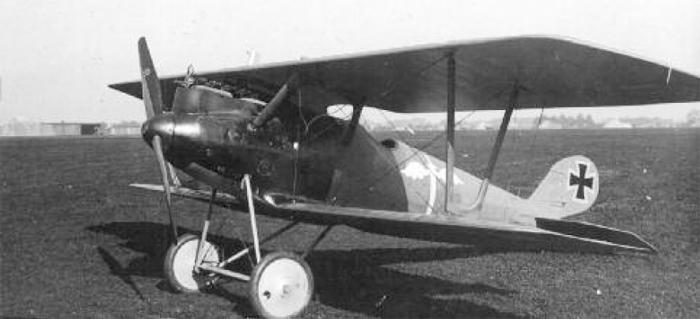
There is some thought among aviation historians that Berthold was flying Pfalz D.III 4004/17, seen here, when he was shot down during Jasta 18’s encounter with 56 Squadron, RFC. (Greg VanWyngarden)
The staffel leader lost consciousness immediately after landing20 and was rushed to Kgl.Bayer.-Reserve-Feldlazarett 4521 [Royal Bavarian Field Hospital 45] in Courtrai, some five kilometres from Jasta 18’s airfield. An examination of Berthold’s aeroplane revealed that the bullet that did so much damage to him had ricocheted off part of his cockpit and entered his upper arm at an odd angle, causing a comminuted fracture of the humerus. It was exactly a year to the day since Berthold had arrived at Jasta 14, mostly recovered from earlier injuries. Now he was in hospital once again.
There would be no way to conceal the sudden and probably long-term absence from frontline service of a major, highly-decorated fighter ace such as Rudolf Berthold. Consequently, just over two weeks after he was hospitalised, the Nachrichtenblatt announced to the Luftstreitkräfte:
‘During a hotly-contested air battle over Zonnebeke on the evening of 10th October, Oberleutnant Berthold was severely wounded by a shot in the right upper arm, but was able to land his aeroplane smoothly on his home airfield.’22
Any chance for a speedy recovery was dashed when it became apparent that treating and helping such a complicated injury to heal was beyond the scope of a field hospital. After Berthold was deemed to be in a stable condition, on Wednesday, 31 October, he was transferred to the St. Vincenzstift Hospital in Hannover.23
While Berthold was on the way back to Germany, his Jasta 18 comrades wired news of the transfer to his sister Franziska in Berlin, where she was a nursing supervisor in the Viktoria-Lazarett24 [Victoria Hospital], which was affiliated with the Charité University Hospital in the German capital. She prevailed in her request to have her brother transported to Berlin for treatment by Dr. August Bier, one of Europe’s foremost bone specialists and the hospital’s chief instructor for physicians training to become military surgeons.25 Clearly, Rudolf Berthold was to receive the best possible medical attention available at the time.
Return to Berlin
He arrived at Dr. Bier’s well-known clinic in the Ziegelstrasse on 2 November 191726 and began a four-month course of treatment. Bier’s priority was to avoid amputation of the arm and then to determine what mobility Berthold might have with it.
Two days later, Rudolf Berthold began to receive the tributes of a nation and army grateful for his sacrifices in battle. The first came from Generalleutnant Ernst von Hoeppner, Commanding General of the Luftstreitkräfte, who wrote:
‘His Majesty the Kaiser und König [Emperor and King], in recognition of your outstanding achievements as a fighter pilot and leader, has been moved to promote you to Hauptmann [captain]. With sincere congratulations on this example of recognition by your supreme warlord, I join in the wish that full recovery allows you to, once again, participate and succeed in the struggle for German supremacy in the air.’27
Next, Generalleutnant Karl Dieffenbach, Commander of the 9th Reserve Corps and Army Group Wytschaete, wrote:
‘With deep regret I have received the news about your serious injury. I am moved to express my heartfelt thanks to you for the excellent and meritorious deeds you have accomplished during your affiliation with Gruppe Wytschaete.
‘In an admirable, vigorously aggressive spirit and the most relentless use of your own person, you have succeeded, often against a numerically superior enemy, with no regard for the circumstances under which you found him, to still challenge him and in the short time of six weeks to have personally shot down sixteen aeroplanes.
‘Under your excellent ... leadership, and energised by your personal daring and skill, Jasta 18 has won eighteen – and the Jagdgruppe has eighty-four – aerial victories over enemy aeroplanes ... I hereby acknowledge, on behalf of all of the troops in the Gruppe, your splendid achievements and contributions, and express to you my warmest thanks for them.
‘I wish you for the course of your recovery all the best from the heart and hope to see you refreshed and robust back among us.’28
And, from Hptm Helmuth Wilberg, Commander of Aviation for the 4th Army:
‘To my joy, I hear that you are feeling better and you are under the attentive care of Professor Bier. I am sure the course of your recovery will be successful.
‘With all my heart but I would like to ask you to not come back too early! If you did, you would not give the best service to yourself or the Fatherland. We will need you in the spring, but not in the winter! This way ... you will help to harden your weakened body for the heavy tasks that await us.
‘We are all fine. Wytschaete is slowly but surely becoming a quiet sector. Your worthy men are working as gallantly as ever.
‘Once again, all best wishes and sincere thanks for what you have achieved for the 4th Army through your tireless zeal and selfless application of your talents.’29
Berthold’s superiors were military men and had no real sense of the extent of his injuries. At this point, entries in Berthold’s Persönliches Kriegstagebuch [personal war diary] took on a new tone. Written in the third person, most likely by his sister Franziska, who devoted herself almost entirely to her brother’s care, the diary entries offered insight into Rudolf Berthold’s true condition, as noted early in his convalescence:
‘A long, difficult ordeal began, made tolerable only by countless examples of recognition and respect from the widest circles. It was due to Herr [Doktor] August Bier that the arm was saved; it healed slowly, but remained paralysed.’30
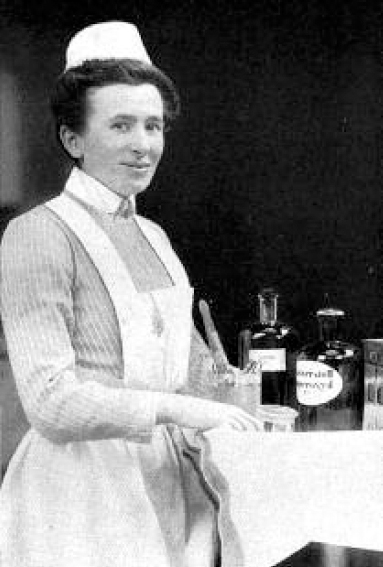
Exercising the same strong will-power as her brother, 33-year-old Franziska Berthold took charge of matters relating to his hospitalisation in Berlin. (Heinz J. Nowarra)
A Difficult Convalescence
Berthold was officially on medical leave. Thus, four days after he was hospitalised, temporary commands of Jasta 18 and Jagdgruppe 7 (now comprising Jastas 18, 24, 33 and 36) were assigned to Oblt Ernst Wilhelm Turck,31 a senior regular army officer and fighter pilot. Even though Berthold was severely wounded, he focused on eventually returning to his frontline commands. An undated diary entry recorded a potential stumbling block – and his determination to overcome it:
‘Berthold’s return to flying was, in the judgment of the doctors, ruled out. But Berthold did not let himself be discouraged. He learned to write with his left hand and said: “If I can write, I can fly!”’32
Berthold was kept informed of wartime developments. Hence, to him, the Bolshevik Revolution, the subsequent collapse of the Russian army and the peace talks at Brest-Litovsk that began in December 1917 related only to their effect on the Western Front. Within this view, German troops and air units freed from duty on the Eastern Front would aid the spring 1918 offensive against British and French forces.33
Exciting days lay ahead and Rudolf Berthold was eager – and impatient, as usual – to be back in the air. His attending physician, Dr. Bier, was also a pioneer in the development and use of spinal anaesthesia, achieved by injecting cocaine into the spinal column.
In view of Bier’s successful use of the cocaine for surgery and its acceptance at the time by Dr. Sigmund Freud and others to treat melancholy (clinical depression), it is easy to see how that drug would have been prescribed for Berthold’s chronic pain. But, as World War I historian and physician Dr. M. Geoffrey Miller told the author: ‘Bad temper and aggressiveness are common features of cocaine ... Cocaine only relieves pain when given locally by injection; taking it by mouth or intravenously ... [only] gives the patient a feeling of euphoria when first given and that is why cocaine users continue the drug, ignoring the irritability and aggression [that accompany it]. Using cocaine by intravenous injection ... would suggest psychological addiction.’ Those points make Berthold’s subsequent actions more understandable.
When the boredom of a hospital room in Berlin and its treatment programs became more than Berthold could bear, a drug-inspired impetuosity triumphed over his sense of reason. As an entry in Berthold’s diary noted: ‘In mid-February [1918], scarcely eight days out of bed, he reported to the Feldflugchef [chief of field aviation] and stated that he wanted to ... resume command of [Jagdgruppe 7].’34
Given his stature in the German military aviation establishment, Berthold would have had access to the Feldflugchef, Oberstleutnant [Lieutenant Colonel] Hermann von der Lieth-Thomsen, and he would have been allowed to present his case for reinstatement at such a high level. He must have been persuasive, as his diary ghost-writer continued: ‘Berthold ... would no longer let himself be stopped, although the arm [wound] still festered badly and his body was still weakened. With sorrow and grief in their hearts, those who cared for him watched him depart [from Berlin].’35
On Friday, 1 March 1918, Berthold reported to the medical office at the aviation replacement unit Flieger-Ersatz-Abteilung 5 in Hannover. He was examined and allowed to proceed back to Jasta 18, but restricted from flying.36 While he was convalescing in Berlin, his staffel had benefitted from the successful German counter-attack at the conclusion of the Battle of Cambrai in November 1917. Jasta 18 moved south from the 4th Army sector in Belgium to an airfield in Avelin, France, just outside of Lille, in the 6th Army sector.
The airfield was new to Rudolf Berthold, but many of his old comrades were still there and he received a warm welcome from them on 6 March.37 Just the sight of their staffel leader was inspiring. And, in terms of air combat success, a recent issue of the weekly Luftwaffe [Air Weapon] magazine listed him as Germany’s third highest-scoring living fighter ace at the time.38
As he could not yet lead them in the air, however, he found the ideal pilot who could: Hptm.d.Res Hans Joachim Buddecke. Berthold’s oldest and best friend had returned from his second tour of duty with the Turkish air arm, but no command in France was available for him. Consequently, when Berthold requested that his friend join him at Jasta 18, Buddecke was able to leave his post at Jasta 30 and, on 8 March, the long-time comrades were reunited at Avelin.
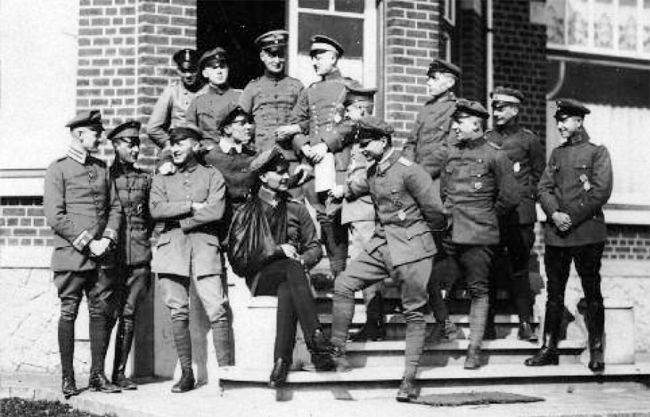
It was a joyous occasion when Hptm.d.Res Hans Joachim Buddecke arrived at Jasta 18 to help his old friend. Seen at the reception at Avelin Airfield were, from bottom left: Vfw Hermann Margot, Ltn Hugo Schäfer, Ltn Hans von Buttlar, Ltn.d.Res Josef Veltjens, Berthold (with his arm in a sling) talking to Buddecke, Ltn Johannes Klein, Ltn Oliver Freiherr von Beaulieu-Marconnay and Ltn.d.Res Arthur Rahn. Top row from left: Ltn Georg von Hantelmann, Ltn Paul Lohmann, Oblt Ernst Wilhelm Turck, Ltn Walter Dingel, Ltn Walter Kleffel and Vfw Theodor Weischer. (Arthur Rahn Album via NMUSAF)
A Hero’s Death in the Air
The co-leadership arrangement seemed to be ideal: Berthold motivated the pilots on the ground and Buddecke, a master air fighter, led them to targets in the sky. Jasta 18 had become almost scoreless and needed much inspiration. Shortly after noon on Sunday, 10 March, the weather was good, but visibility was poor39 and Buddecke led a patrol of red and blue Albatroses southeast, towards Lens.
At about 1:00 p.m., east of Lens, the German patrol was surprised by a flight of Sopwith 1F.1 Camels from ‘C’ Flight of 3 Squadron, Royal Naval Air Service. The fast and nimble little fighters, fitted with twin Vickers .303-calibre machine guns, were formidable opponents. In the hands of a veteran pilot such as twenty-four-year-old Flight Lieutenant Arthur Treloar Whealy (in B.7220) the Camel was deadly. As Whealy’s flight dived on the Albatroses, he singled out one and, as he reported:
‘I immediately dived on his tail and opened fire at about 100 yards, firing a burst of about forty rounds from each gun. The E.A. turned half over on its back and went down in a series of stalls and spins. I watched till it was about 3-4,000 feet above the ground and then lost sight of it on account of the haze ...’40
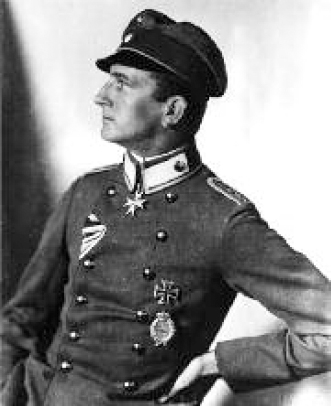
JG 2 commander Hptm Adolf Ritter von Tutschek earned the highest bravery awards of the Kingdoms of Prussia (Pour le Mérite) and Bavaria (Knight’s Cross of the Military Max-Joseph Order). The latter was presented before he became a pilot. (Greg VanWyngarden)
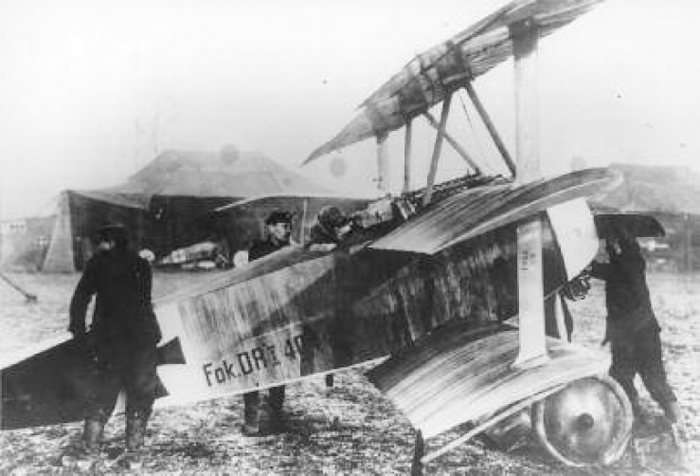
Ritter von Tutschek seen preparing to take off in Fokker Dr.I 404/17, the aircraft in which he was killed. (Greg VanWyngarden)

Before the ‘staffel-swap,’ Jasta 15 used markings such as those seen on Off.Stv Richard Schleichardt’s Albatros D.V 2226/17. (Volker Koos)
Hans Joachim Buddecke, fell and crashed within German lines at Harnes, northeast of Lens – dead at age twenty-seven. He was credited as Whealy’s tenth ‘kill.’41 Once again, Berthold was stunned by a great personal loss, as if he expected his closest friend to be invincible.
Berthold had no time to dwell on Buddecke’s death, however; the initial attack of the Kaiserschlacht [Kaiser’s Battle], the German term for the spring offensive, bolstered by fresh troops from the Eastern Front, was to be launched on 21 March. German units in the 17th, 2nd and 18th Armies – from Arras south to La Fère – prepared to separate French and British forces in the Somme sector before American troops could effectively be deployed.42 Jasta 18, based close to the 17th Army sector, was ready to respond as needed.
But another event altered Berthold’s role in the coming offensive. On Friday, 15 March, Hptm Adolf Ritter [Knight] von Tutschek – the commander of Jagdgeschwader 2 (JG 2), a twenty-seven-victory ace and a Pour le Mérite recipient – was killed in aerial combat.43 The following day Berthold, who had twenty-eight victories, was appointed to succeed von Tutschek in commanding JG 2. Later that day he was driven some 140 kilometres south-southeast from Avelin to JG 2’s airfield at Toulis in the 18th Army sector to meet his new comrades.44
Berthold Commands JG 2
Berthold had long advocated grouping four Jagdstaffeln into Jagdgeschwadern [fighter wings] led by experienced and combat-proven fighter pilots. Now, at last, his efforts had been recognised. Encouraged by the success of Jagdgeschwader 1, formed the previous June under the leadership of Rittmeister Manfred Freiherr von Richthofen in the 2nd Army sector, on 2 February 1918 the chief of the German general staff had authorised creation of two more fighter wings45: JG 2 commanded by Ritter von Tutschek, then a twenty-three-victory ace, and comprising Jastas 12, 13, 15 and 19 for the 7th Army sector; and JG 3 led by Hptm Bruno Loerzer, who also had twenty-three victories, and made up of Jastas 2, 26, 27 and 36 in the 4th Army sector.
Hardly settled into JG 2, which was about to change airfields46 in preparation for the offensive, Berthold made an unprecedented request. He had strong personal ties to Jasta 18, which he felt had been much more proficient under his leadership. But, as his new Geschwader’s units were permanently assigned to it, he could not add or replace a staffel. Berthold’s request, or quietly-stated requirement, came at the worst possible time, four days before the offensive was to begin. Yet, he was accommodated, as noted in JG 2’s war diary:
‘Hauptmann Berthold wanted very much to exchange Jasta 15 for his old Jasta 18. He himself was generally grounded. Only when the Geschwader was deployed in its entirety would he be allowed to fly with it... Hauptmann Berthold saw his wish just about fulfilled; from Jasta 18 came a line of old friends, proven comrades-in-arms and reliable subordinates ...’47
The former Jasta 18 pilots and ground crewmen, now re-named as Jasta 15, brought with them the red-nosed blue aeroplanes that had had become synonymous with Rudolf Berthold’s success. The ‘new’ Jasta 18 adopted a white and red colour scheme, and relocated to the 17th Army sector.48 On the eve of the first offensive, Berthold exercised an air of entitlement that had always worked for him. He was granted a brief leave to attend Hans Joachim Buddecke’s funeral in Berlin. Given the frequency of air traffic from the battlefield to the homeland, it would have been easy for flights to be arranged to transport Berthold to the German capital and back within a short time.
Buddecke was a native of Berlin and, appropriately, his body was to be buried with great honour and pageantry in the Invalidenfriedhof [Invalids’ Cemetery]. Established in 1748 by King Friedrich II of Prussia (Frederick the Great), that cemetery became the burial ground for distinguished Prussian military personnel.49
On the day of the funeral, Friday, 22 March,50 Rudolf Berthold was comforted by his sister, who, almost certainly, wrote the entry in his diary, noting that ‘the friends were together barely five days ... Berthold was not weak, indeed, his eyes looked more determined than ever, although his voice trembled [during final remarks] at the grave of his friend. [He] found no one out there to replace Buddecke, his last friend.’51
Immediately following the funeral, Berthold returned to JG 2, but his absence may have hindered the Geschwader’s role in the opening drive of the Kaiserschlacht, on 21 March. German 18th Army records for this period are sporadic, but it was not until three days later that Hptm Alfred Streccius, the commander of aviation, reported about activities on 23 March:
‘The 113th and 28th Infantry Divisions complain about the strong dominance of enemy flyers. The troops have the impression that British flyers can do anything with impunity. Use of Jagd- or Schlachtstaffeln [close air support units] is strongly desired here. Jagdgeschwader 2 has received orders to deploy all available forces immediately.’52
JG 2’s results in the air accompanied initial tactical success of the ground battle, which ‘achieved an advance of about forty miles in eight days’.53 But the opening stage of the offensive had failed to achieve its strategic objective: splitting French and British forces in the Somme sector. So a second drive was launched in April – yet another month during which Rudolf Berthold had to remain on the ground while his Geschwader comrades fought against ever-improving and ever-growing aerial opponents.
Also at this time, the post-war JG 2 history recorded, ‘the slender Hauptmann, with his right arm in a sling, did not betray what he thought. A warm glow was not to be found in his big fiery eyes ... He said over and over, “And I will fly again ... even if they must carry me to the aeroplane!”’54
Until he could fly, Berthold devoted his personal energy, willpower and intellect to inspiring the men of his four Jagdstaffeln. One such occasion was during the ceremony after Jasta 12’s Ltn Hermann Becker scored his ninth victory on 12 April. The thirty-year-old pilot was about to be presented with the Ehrenbecher [cup of honour] to mark the achievement when Berthold told him:
‘As the war becomes more like iron every day, so this goblet is no longer made of silver, but, rather, of iron. The outward appearance of an award does not convey its value, but only indicates the achievement. Thus, a fighter pilot ... may find this type of Ehrenbecher to be more valuable than receiving one made of silver ...’55
As events would show, Berthold picked the right symbol to exemplify the hard times to come.